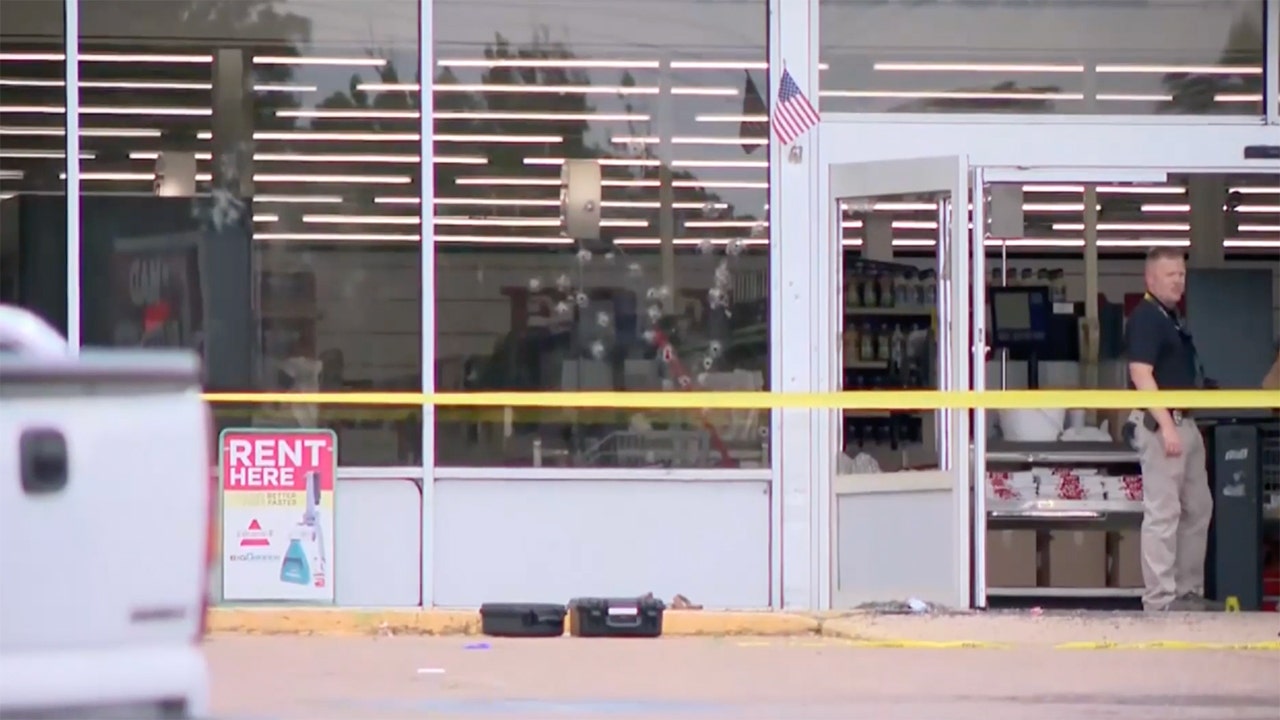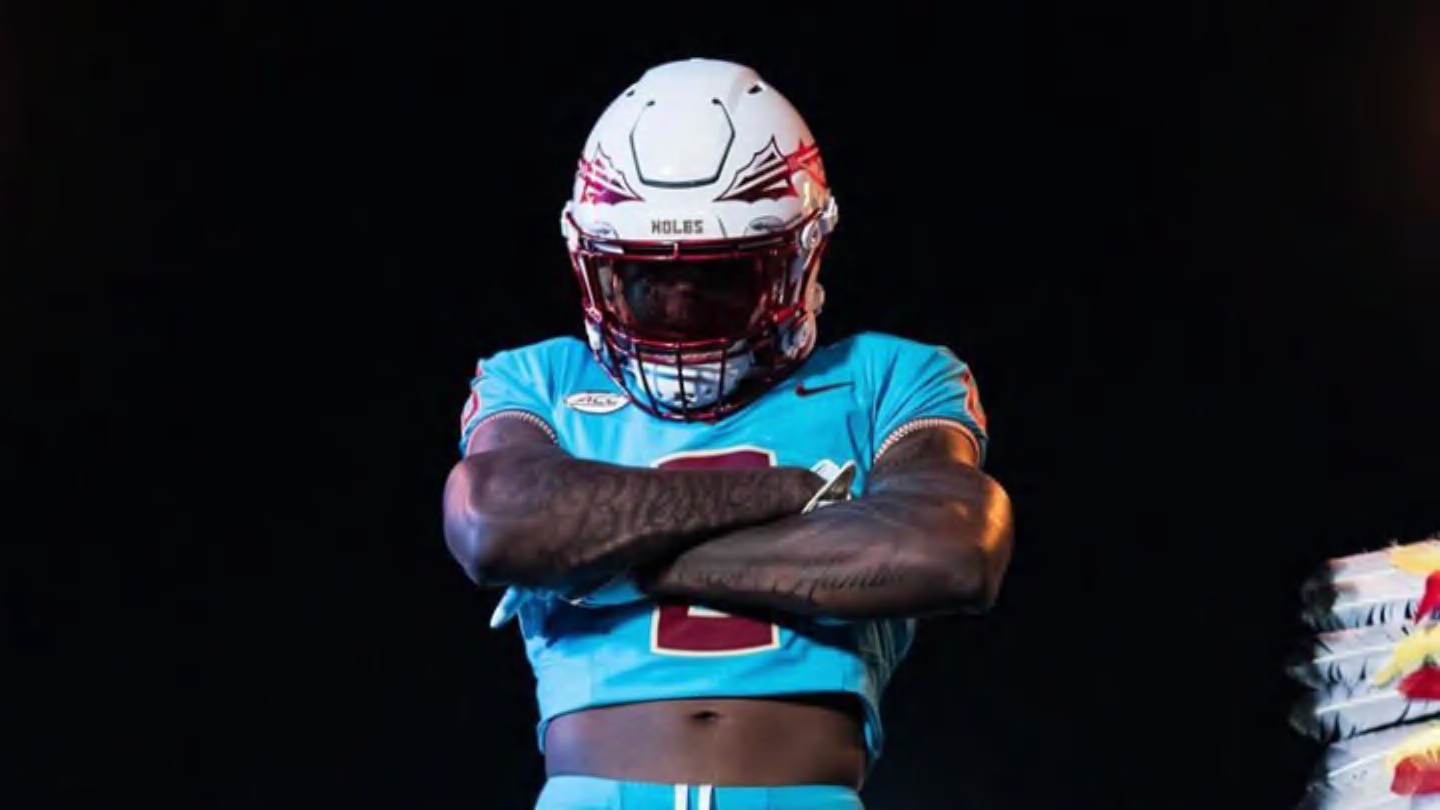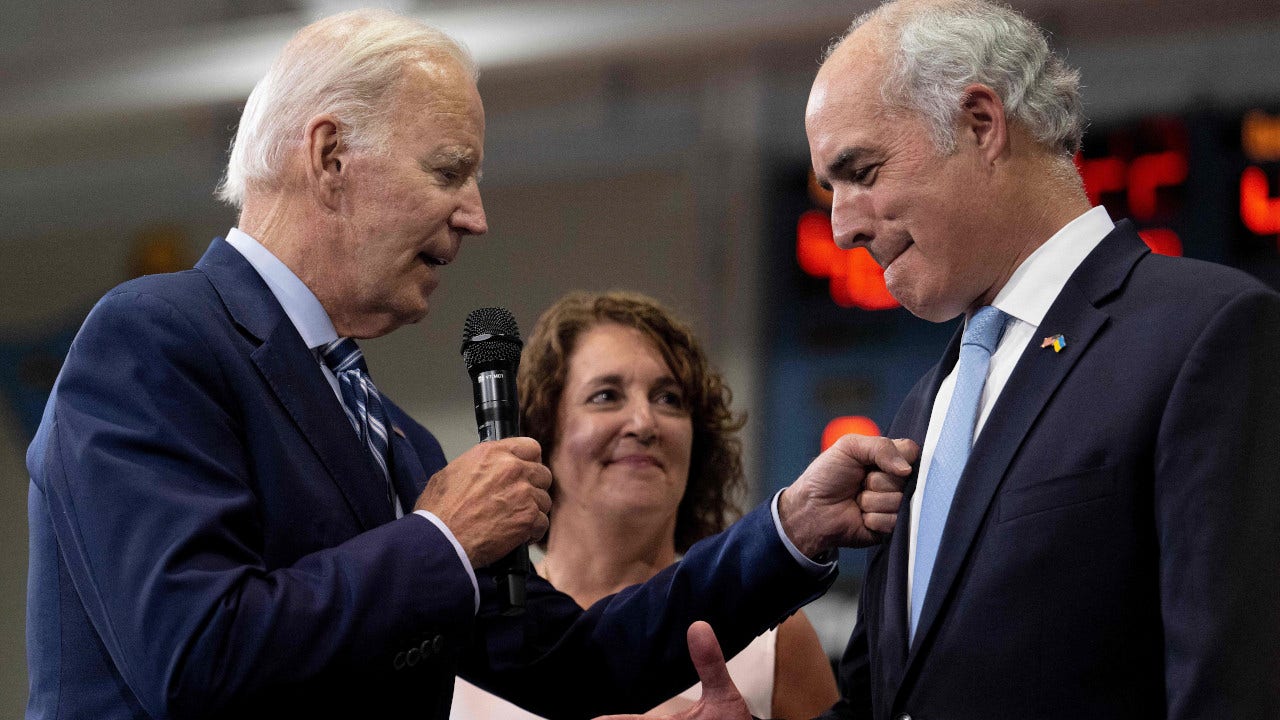Lifestyle
Wow! These amazing drone's-eye views of our world are up for best drone photo

A century-old wrestling competition in Chittagong, Bangladesh, known as Abdul Jabbar’s Boli Kheladraws thousands of spectators annually. In this picture from April 24, 2023, two wrestlers go at it on a sandy stage in front of a street audience.
Sanchayan Chowdhury
hide caption
toggle caption
Sanchayan Chowdhury
On a hot and humid Tuesday morning in April 2023, at the ringside of a wrestling match in Chittagong, Bangladesh, software engineer Sanchayan Chowdhury was looking for a good vantage point to launch his drone. Currently living in Finland, Chowdhury had traveled to Bangladesh to capture shots of the famed Abdul Jabbar’s Boli Khela — a wrestling tournament that dates as far back as 1909 and is named after the man who started it. Boli Khela means “the game of powerful people.”
The image highlights the dedication, skill and physical prowess of the wrestlers, he says. “I decided to shoot this picture because I wanted to capture the raw energy and passion of the wrestlers as well as the vibrant atmosphere of the event. It’s a way to honor my heritage and share this unique cultural practice with a broader audience.”
His photo is a finalist at this years’ Siena Drone Photo Awards.
Drone photography has really evolved over the years, says Emanuela Ascoli, one of the judges for this year’s contest. And that’s thanks to the advancement in technology. Drones can now fly faster, secure better quality images and as a result of their GPS (global positioning system) can move precisely and maintain stable positions. “This has made it easier for photographers to capture detailed and stunning aerial shots from perspectives that were previously impossible to achieve,” she says.
Overall, judges look for photographs that stand out for their technical skill, creativity, composition and visual impact, Ascoli says. “Above all, I consider the photograph’s emotional and aesthetic impact, including how well it captures a moment — the perfect moment,” adding that “a great picture stops the time and raises awareness of the wonders and worries of our world.”
Here’s a selection of contest nominees, focusing on the Global South countries that Goats & Soda covers. The prize winners will be announced on September 28.
A pack of pelicans

Pelicans gather in the wetland Estero el Soldado in Guaymas, Sonora, Mexico. This wetland hosts numerous migrating birds. The white pelicans stand out against waters darkened by sediment.
Guillermo Soberón
hide caption
toggle caption
Guillermo Soberón
Guillemo Soberon chanced upon this scene when he set out to document the beauty of the wetlands called Estero el soldado for the media site Mongabay. “It is a natural protected area that hosts a great biodiversity, over 400 species in 350 hectares of land, and it’s a beautiful space in my hometown, Guaymas, Sonora, México,” he says. As he was shooting wildlife with his camera, he launched his drone to capture shots of the ecosystem from above. He meant to create a “virtual tour” to showcase the beauty and importance of the wetlands and that’s when he spotted a flock of gleaming white pelicans.
“It was such an amazing scene, I couldn’t believe my luck,” he says. While brown pelicans are common in these parts, white pelicans are not easy to find. “I believe that the appreciation of nature is a pathway to its conservation,” Soberon says.
Crossing the Darien Gap

Migrants trekking through the jungle during clandestine journeys through the Darien Gap typically endure five or six days, exposed to all kinds of harsh weather conditions. Over 390,000 individuals have entered Panama through this jungle on their way to the United States.
Luis Acosta/AFP
hide caption
toggle caption
Luis Acosta/AFP
A photographer at Agence France Press, Luis Acosta has on several occasions visited Darien Gap, the region that stretches from the Darien Province of Panama in the south to Columbia in the north. In 2023, over 500,000 people moved through the Darien Gap to migrate to the U.S.
In September last year, Acosta deployed a drone to capture the image. I realized that the only way to show the magnitude of the migration through the jungle was with a drone,” he says. “The message I want to send with this image is how people’s desperation to find a better life forces them to make such dangerous journeys, sometimes risking the lives of their loved ones,” he says.
Crowds at the bullfight

More than 42,000 people witness the final minutes of a bullfight in Mexico City’s Plaza México arena.
Roberto Hernandez
hide caption
toggle caption
Roberto Hernandez
Drone shots of crowds create interesting visual patterns, says Roberto Hernández Guerrero, a graphic designer turned photographer.
In February 2024, a court ruling allowed bull fights to finally return to Mexico City after a gap of two years. After the two-year ban, crowds swelled. Over 40,000 people gathered at La Monumental Plaza de Toros Mexico to watch the bulls return to the arena. And he decided to aim for a drone photo.
It took a week of planning and two days of drone flying to get the perfect shot. He rented the roof of the biggest building near the Plaza de Toros and from this vantage point launched his drone.
Guerrero purchased his first drone camera a decade ago. “It started as a hobby,” he says. “I’ve flown a lot of different models, each with better technology and camera than the last. And while I enjoy the result, to be honest, I don’t enjoy flying drones, because it’s stressful,” he says. And that’s because he knows that whatever goes up can come crashing down too. “Some of my best photos involves flying drones over the heads of many people but that thought isn’t relaxing,” he laughs.
The title of this photo, “Last Minute,” refers literally to the last minutes of a bull’s life. “I don’t support bullfights,” Guerrero says. “When the bull died, I almost cried, taking that last shot. But as with many aspects of my life, I respect people who think differently.” The photo, he says reflects both the pain and plight of the bulls in the arena and how they suffer, contrasting it with thousands of people who embrace the tradition.Ad
Where the Banni buffalo roam

The Banni buffalo can tolerate harsh climatic conditions, surviving on scanty patches of grass and shrubs. They are commonly found in the salt marshes of India’s Thar desert.
Raj Mohan
hide caption
toggle caption
Raj Mohan
An engineer who lives in Bengaluru, India, Raj Mohan has a passion for photography and for drones that drew him to a salt marsh within the Thar desert in the western Indian state of Gujarat.
“Drones transform the mundane view of what we see everyday. Everything looks different from above,” Mohan says.
At first, he meant to seek out patterns of white salt streaks on the brown mud. However, his drone shots also caught farmers taking their Banni buffaloes out to graze in the small patches of green left. Banni buffaloes are well-adapted to survive water scarcity, frequent droughts and high temperatures.
“Ultimately, the resilience of these buffaloes serves as a powerful example of how life can adapt and survive under challenging conditions,” he says.
A 6-mile bridge

The river carves out large, tree-like ravines on the mudflat along the Jiashao Bridge that extends into the East China Sea.
Sheng Jiang
hide caption
toggle caption
Sheng Jiang
This drone photo by middle school teacher Sheng Jiang depicts Jia Shao bridge (also called the Jiaxing-Shaoxing Sea Bridge) — stretching across the mouth of the Qiantang River in the Zhejiang Province of China. It’s one of the longest pylon cable sea bridges in the world, extending 6 miles.
“You can see the splendor of Chinese infrastructure,” says Jiang. She was especially fascinated by the branch-like patterns (that look like nerve endings. she says) that the river carves out in the mud flats around the bridge. In order to get the patterns in the picture which can only be seen from the air, she took the shot at midday and at low tide so the shadows of the bridge wouldn’t interfere with the image.
“By combining man-made structures with unique natural landscape along the Qiantang River, I hope to show a China where man and nature co-exist in harmony,” she says.
Snowed-in village

The village of Kargapazari in the Bingol province of Turkey is blanketed with a layer of white snow, resembling an absract painting from this drone perspective.
Hüseyin Karahan
hide caption
toggle caption
Hüseyin Karahan
Hüseyin Karahan served as an officer in the Turkish naval forces for 30 years before retiring in 2018 and indulging in his love for photography. Karahan says, “Famous Turkish photographer Ara Güler, who made me love the art of photography, has a well-known saying: ‘Photos taken at random turn out better, we are happier with people we meet by chance, falling asleep in a corner is the most enjoyable sleep, unplanned activities are more fun.’ In short, everything that happens spontaneously is the most beautiful. These words completely summarize the photo I took,” he says.
On a February morning, Karahan visited the village of Kargapazari in the Bingol province of Turkey. He planned to photograph people leaving a mosque after prayers. However, their exit was delayed and so he raised his drone to the maximum height to see what it would see. At that moment, he says, the landscape looked like an abstract picture — and reminded him of how small we actually were in this big world.
“I love taking photos with a drone, it allows us to see things that the human eye cannot see, perhaps with the eyes of a flying bird,” says Karahan.
City meets mountains
Beijing-based Xu Zhan, who’s 64, has been in love with photography since his middle school years and is a member of the China Photographer’s Association. He started using drones for filming in 2018, captivated by the perspective it could provide to ordinary landscapes.
Visiting Guiyang City in the Guizhou Province of China, he shot this photo of Qianchun Interchange bridge in July 2023. He sought to capture how the urban landscape integrates with surrounding mountainous terrain. With 11 ramps, 8 entrances and exits, and two main lines, the overpass was put into use in 2016 and is spectacular, he says. “I only took a small part of the huge overpass in this picture. The exit of the overpass between the hills draws people’s attention to the bustling city and to the dazzling lights of every household.”
Nighttime photography using a drone can be a challenge, he says, because of poor visibility. His top tip: “Find a good [spot] and take enough photos until you’re satisfied.”
Kamala Thiagarajan is a freelance journalist based in Madurai, South India. She reports on global health, science and development and has been published in The New York Times, The British Medical Journal, the BBC, The Guardian and other outlets. You can find her on X: @Kamal_t.

Lifestyle
'Love is Blind' is mired in lawsuits. What does that mean for reality TV?

Contestants on Love is Blind live apart from one another and do not see each other before agreeing to be married.
Netflix
hide caption
toggle caption
Netflix
The hugely popular Netflix reality show Love is Blind purports to be an experiment where contestants have a chance to fall in love — sight unseen. After “dating” through a wall in small pods, the men and women get engaged, meet in person and then decide at the altar whether or not to commit to a real, legally binding marriage.
But some members have accused the show’s production company of exploitation, and two former cast members have formed a group to help connect reality show contestants to legal and mental health resources.
“There are a lot of problems with this show,” TV critic Emily Nussbaum says of Love is Blind. “The problem with it is the way the show is run, and frankly, the way that almost all modern reality shows are run. Dating shows, I think specifically, have a lot of these dark qualities that viewers and fans of them don’t know about.”
A staff writer for The New Yorker, Nussbaum wrote about the show in her May 2024 article, “Is Love is Blind a Toxic Workplace?” She chronicles the origins of the genre and its importance to our culture in Cue the Sun! The Invention of Reality Television.

Nussbaum says reality television is a “genuinely powerful modern genre” that developed over decades, and which affects everything from personal relationships to politics. She notes that it’s common for contestants to sign extremely aggressive non-disclosure agreements that prevent cast members from discussing the making of the shows.
“They can’t talk about what their producer did, if their producer lied to them, if their producer made them cry by asking them numerous personal questions based on their psychiatric evaluation forms, and then took that crying out of context in the edit,” Nussbaum says. “They can’t talk about any of that, or they may get sued.”
Nussbaum notes that there have been a series of lawsuits related to Love is Blind. One suit, which has been settled, accused the show’s creators of underpaying, underfeeding and pushing alcohol on contestants. In another suit, a cast member accuses the show’s producers of facilitating false imprisonment and sexual assault.
“All of these lawsuits are dealing with a mixture of things: the extremely oppressive contracts, … abuse and exploitation on the show and dealing with the labor conditions,” Nussbaum says. “And [the lawsuits] don’t only have to do with Love Is Blind. [They are] addressing terrible labor conditions and terrible legal conditions and … the people who go on these shows and who work on these shows as worthy of decent treatment.”
Interview highlights
On reality shows as “dirty documentaries”
When I call them “dirty documentary” what I mean is they take documentary techniques and they create formats that put pressure on the people inside them. And the less the people inside [the shows] know about what’s going to happen, the more powerful, and to some degree authentic, their emotional responses are.

On how the earliest form of reality programming took place on radio
The earliest form of reality television that I talk about was actually before TV. … There was this explosion of shows on radio that also cast just regular people, and that created a similar kind of moral outcry, where people were sort of appalled that regular people were going on the air. And I’m talking here about shows like Candid Microphone, which was the first version of Candid Camera, Allen Funt’s prank show, and Queen for a Day, where a bunch of ordinary women went on and told really distressing stories about their personal suffering in their marriages, their poverty, abuse, sickness and things like that. And so people were very upset about the fact that ordinary people were going on the air. There was no such thing as reality casting at the time. I mean, this was just an opportunity for regular people to go on radio, and later on TV, and participate in these shows, sometimes for prizes. Like, on Queen for a Day, the person who won [was] based on a clap-o-meter, like other women rating them [on] who had the ugliest life — their motive for going on the show was obviously that they could win these prizes.
On Love is Blind contestant Renee Poche being hit with a lawsuit for talking about her bad experience
She definitely, as time went by, wanted to back out of the whole thing. But as on all reality shows, it’s a collaboration between the cast and the crew, and there’s all sorts of psychological things that keep you moving forward, even if you have doubts. Essentially, I think the message that she got was that she should keep going because … part of the show is that at the end of it, you’d go to the altar and you can say no to it. So it just kept rolling forward. …
She felt threatened by [Carter, her fiancé on the show]. She was only going to film scenes with him when she went over there to be with him. But ultimately they did move forward to the altar. I mean, the bigger deal is that Renee wasn’t allowed to talk about what happened on the show. She wasn’t actually featured on the season. She and Carter were treated as kind of side characters. Their story was cut down very much at the last minute, and once she began to talk about what Carter was like, that she had felt threatened by him, that she felt pressured to move forward with the show, that’s when she got slammed with the lawsuit.
Nobody’s allowed to talk about the negative aspects of what they experience on the show, because there is a threat of these lawsuits. Generally, people haven’t been sued. Renee was, and I feel that that was a message to everybody. If you experience anything that’s exploitative or abusive while making a reality show, not just Love is Blind, but any show and you speak out about it, you’re at risk of getting sued.
On the private arbitration that keeps controversy out of the public eye

Emily Nussbaum TK
Clive Thompson/Penguin Randomhouse
hide caption
toggle caption
Clive Thompson/Penguin Randomhouse
Essentially, it keeps the public, including fans of these shows, from understanding the actual conditions in which they’re made. And most of the time when people talk about their experiences on the show, they’re not sued. But the one person who was sued recently, who I wrote about in my article, was sued for $4 million. And I think that sends a significant message. There are multiple motives for people not to speak out about any of this. And frankly, these conditions in these contracts are absolutely standard for the industry. I think people who watch the show not only don’t know about that, but they often just don’t sympathize with it. The dominant feeling is: You decided to go on it, so anything that happens, you should have expected it. I think that shows a lack of compassion, but also I think it shows a lack of understanding of exactly what the conditions are that we’re dealing with here.
On how reality show participants have few protections
One thing I found while I was working on this piece was about a workplace category that they’re in, in terms of Hollywood unions. They’re called “bona fide amateurs,” which is to say, they’re not scripted performers. That would be in SAG, like actresses, and they’re not unscripted performers that would be in SAG, like, say, TV hosts and things like that. But they’re also not the subjects of documentary, who are in a different category and have a little control. They’re essentially contestants on game shows. They’re designated as a category that is sort of non-official and has no protections or rights of any kind. And so what I was writing about in this piece was that the first glimmerings of a movement to try to win protections, and also just to try to educate the general population about how these shows are made and what these issues are, and to improve things, because I think some of the people at the center of this movement, it’s not like they’re saying you couldn’t make an ethical reality show. They’re saying that right now, the way reality shows are made is non ethical, really, both for cast and crew. They’re non-unionized sets. People don’t have a lot of rights. And the conventions and history of the genre have a lot of ugly things about them.
Thea Chaloner and Susan Nyakundi produced and edited this interview for broadcast. Bridget Bentz, Molly Seavy-Nesper and Meghan Sullivan adapted it for the web.
Lifestyle
This Is Definitely Not a Stolen Lamborghini on Facebook Marketplace, No Sir

Hi there! Do you like flags and is your favorite color red? Because I’ve found a Lamborghini Gallardo that would be perfect for you. Low mileage, no damage, and a steal for just $35,000!
Unless it is an actual stolen vehicle. We have no idea but we do have a lot of questions.
In a Facebook Marketplace listing posted three days ago, a “2009 Lamborghini Gallardo LP 560-4 Coupe 2D” with 20,000 miles on the clock is up for grabs for the low low price of $35,000. There’s no funny business in the title. It’s pretty straightforward. It’s everything else that gives pause.
“Does not start stuck in drive! No title. Don’t ask for vin,” the listing starts. The single photo shows the back corner and side of the Gallardo, license plate conveniently cropped out. It looks fine apart from the dolly mysteriously stuck under the rear wheel. “Sold as is for parts everything is there nothing missing,” the listing ends.
Again, we’re not saying this is stolen. We’re not not saying it either. Just making observations, like the location of East Hartford, Connecticut isn’t exactly crawling with Lamborghini owners. And oh, right: the listing was posted by a Mr. “Bagg Chaser”.
Apparently, Bagg Chaser is so keen on getting rid of this supercar that he posted a nearly identical listing the next day—with a price reduction. Now just $34,000 (such savings!) and with a full vehicle image, Mr. Chaser again asks prospective buyers to “STOP ASKING FOR THE VIN.” He adds that a friend “did a [sic] insurance job and reported the car.” Interestingly, he now claims to have the title too. If you want it, you’ll have to meet him and his “good friend’s house.” Great. “That only way we doing business.”

Kelley Blue Book shows nearby listings for Gallardos of a similar age and mileage ranging from $95,888 to $140,995. All are from seemingly reputable dealers and private sellers who include multiple (and clear) photos as well as accident reports, ownership history, and VINs. Anyway, just another day on Facebook Marketplace. Best of luck to Bagg Chaser and his “buddy,” though. May they have no shortage of red flags to wave.
Lifestyle
In 'A Quiet Place: Day One', Lupita Nyong'o makes silence golden : Pop Culture Happy Hour

Lupita Nyong’o in A Quiet Place: Day One.
Gareth Gatrell/Paramount Pictures
hide caption
toggle caption
Gareth Gatrell/Paramount Pictures

Lupita Nyong’o in A Quiet Place: Day One.
Gareth Gatrell/Paramount Pictures
In the post-apocalyptic world of A Quiet Place, aliens kill anyone who makes a sound, forcing humans into a near-silent existence. The new movie A Quiet Place: Day One takes us back to the beginning, but this time through the eyes of a terminally ill cancer patient played by the excellent Lupita Nyong’o.
-

 News1 week ago
News1 week agoA Florida family is suing NASA after a piece of space debris crashed through their home
-

 World1 week ago
World1 week agoIsrael accepts bilateral meeting with EU, but with conditions
-

 World1 week ago
World1 week agoIsrael will be the ‘ultimate loser’ in war with Hezbollah, Iran says
-

 World1 week ago
World1 week agoNew Caledonia independence activists sent to France for detention
-

 News1 week ago
News1 week agoArkansas police confirm 4th victim died in grocery store shooting
-

 Politics1 week ago
Politics1 week agoTexas Lt. Gov. Dan Patrick pledges to pass Ten Commandments bill after Louisiana passes similar law
-

 World1 week ago
World1 week agoNetanyahu says war will continue even if ceasefire deal agreed with Hamas
-

 Politics1 week ago
Politics1 week agoDeSantis signs bill allowing residents to kill bears, vetoes bill that fines slow left lane drivers















